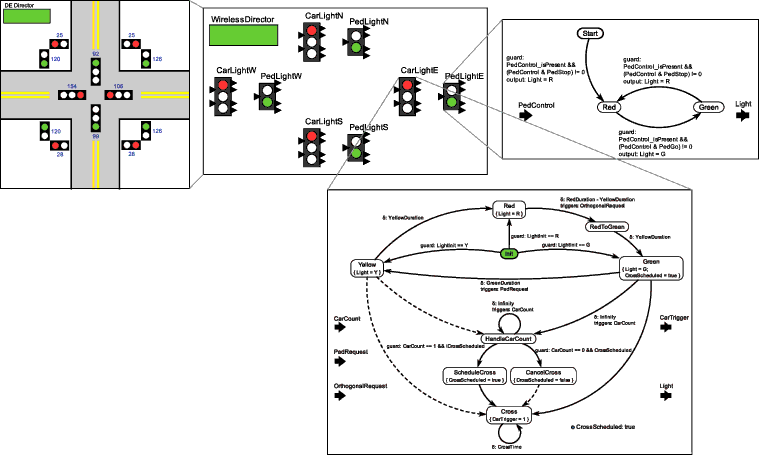|
New Associative Object Model of Integration (NAOMI)
The New Associative Object Model of Integration (NAOMI) is a tool that enables disparate modeling systems to work together.
The lack of modeling precision can lead to design problems that may not surface until system integration. No single existing modeling system can capture the required precision, and it is felt that it is unlikely that such a single system will be developed. However, domain specific modeling languages (DSMLs) are quite precise for their domains. We want to leverage this precision across different DSMLs to provide precision at the overall system level. NAOMI will achieve this goal by allowing disparate modeling systems to be used together.
Specifically, this project is developing technology to facilitate identification of design problems well before system integration. The approach is to systematize multimodeling by defining mechanisms for exchanging modeling data. This enables the use of domain specific modeling languages (DSMLs) in combination. Specific problems being addressed by
this project include:
- Technology for composition of design patterns.
- Technology for maintaining relationships between simulation models and abstractions suitable for formal verification.
- Support for parameterization of models with models. Two versions of these are aspect-oriented multimodeling, where models are woven together to generate new models, and higher order components, where components in a model are parameterized by other models.
- Model ontologies, which annotate data shared across models with semantic information and check for compatible uses of the data.
- Development and application of the event relationship graph (ERG) model of computation for representing control logic and controlling model transformation workflows.
 The model above is a test case constructed by CHESS graduate student Thomas Huining Feng. It shows a hierarchical multimodel that can publish data and subscribe to data from other multi-view models via the NAOMI software framework. This model shows a form of hierarchical multimodeling where the decision logic of a simple traffic light system is represented heterogeneously using both finite state machines (FSMs) and event relationship graphs (ERGs). The decision logic models are composed within the wireless domain of Ptolemy II, which is an extension of the discrete-event (DE) domain that models wireless communication. This wireless deployment model is embedded within a discrete event model that provides test data and animates a simulation. Using the NAOMI framework, this model can import or export parameters from or to entirely different modeling tools.
The model above is a test case constructed by CHESS graduate student Thomas Huining Feng. It shows a hierarchical multimodel that can publish data and subscribe to data from other multi-view models via the NAOMI software framework. This model shows a form of hierarchical multimodeling where the decision logic of a simple traffic light system is represented heterogeneously using both finite state machines (FSMs) and event relationship graphs (ERGs). The decision logic models are composed within the wireless domain of Ptolemy II, which is an extension of the discrete-event (DE) domain that models wireless communication. This wireless deployment model is embedded within a discrete event model that provides test data and animates a simulation. Using the NAOMI framework, this model can import or export parameters from or to entirely different modeling tools.
The objective of the NAOMI project is to explore how the precision of multiple domain specific modeling languages can be leveraged, leading to more accurate and complete models. Through the use of models that describe both the structure and behavior of the system under design, NAOMI will enable enhanced model precision that is not possible with any one individual modeling language. This precision will reduce the number of system integration issues and assure that the software and hardware that gets designed, built, and integrated matches what has been specified.
This work was carried out in conjunction with Lockheed Martin Advanced Technology Laboratories (ATL). from November, 2006 through February, 2010
- CHESS/NAOMI private forum (Available only to CHESS naomi workgroup members)
- CHESS/NAOMI Wiki (Available only to CHESS naomi workgroup members)
- Christopher Brooks, Chihhong Cheng, Thomas Huining Feng,
Edward A. Lee, Reinhard von Hanxleden. Model
Engineering using Multimodeling, 1st International
Workshop on Model Co-Evolution and Consistency Management
(MCCM '08), September, 2008.
- Christopher Brooks, Thomas Huining Feng, Edward A. Lee.
Multimodeling: A Preliminary Case Study, Technical report, EECS Department, University of California, Berkeley}, UCB/EECS-2008-7, January, 2008.
Mailing lists and discussion forums may be found under the naomi link above.
|




